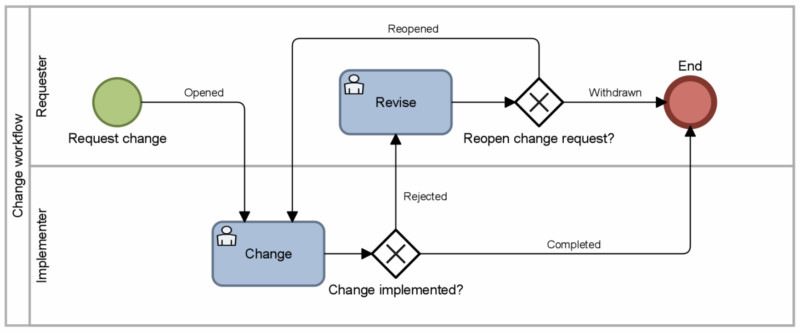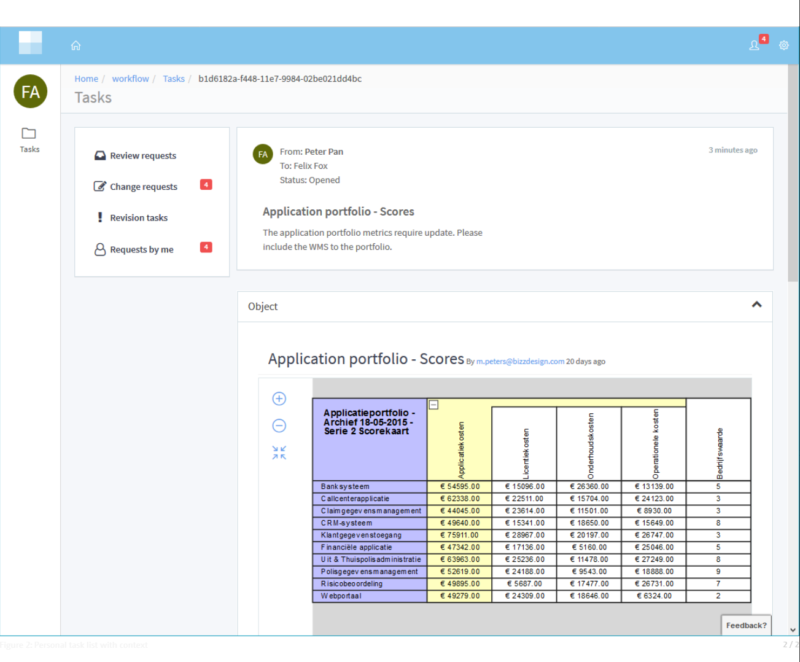An enterprise architecture model, or any other model in your business design practice, contains input from numerous actors within your organization. Your architecture’s governance must continuously collect that input, validate its accuracy and retain a record of all interventions to ensure compliance with regulatory requirements, architecture principles, technology standards and other constraints.
The architectural repository is where that information comes together and, thus, is the favored place for all model-related collaboration in your organization. Workflows enhance collaboration by defining the actors, their tasks and the coordination of their activities. On one hand, workflows help you streamline collaboration by automating information flows. On the other hand, they allow you to highlight responsibilities and enforce action in a more rigorous manner.
The BPMN model in Figure 1 shows a basic workflow that coordinates the activities between a requestor and the implementer of a change in a model.

Figure 1: Change workflow
A workflow system is required to reflect and enforce these models. Preferably, the system tightly integrates with the architects’ environment to provide context for the work. This leads to more direct processing and productive fulfillment of tasks.
Creating workflows that connect everyone
BiZZdesign’s collaboration platform integrates a state-of-the-art workflow system to execute workflow models and track the status of model-related activities. The task page (Figure 2) contains the work items of a user and allows her or him to comment on tasks, thus providing room for feedback, discussions and collaborative maintenance around all assets in the repository.
While practitioners like architects, process designers or data modelers may use our platform on a day-to-day basis, other people in the organization likely contribute only occasionally. The Horizzon web portal accommodates these users. The workflow system and task-oriented view on the model repository can guide their contribution and facilitate navigation to the assets that require their attention.
Workflow-triggered e-mail notifications also allow you to notify and remind them of pending actions, like reviews and change requests. These notifications can also be used to seek feedback or approvals and to trigger changes from everyone in the organization.

Figure 2: Personal task list with context
Updates to workflow models
In our latest release, we offer preconfigured workflows for reviews (approvals) and for change requests (or other forms of feedback), the two most common forms of collaboration around models. In the near future, you will also be able to configure your own custom workflows using the process modeling capabilities of our own modeling environment.
This workflow mechanism allows many different user and stakeholder groups in your organization to work together in a seamless way. It also helps you bridge gaps between silos in the organization and facilitates continuous, collaborative transformation and change: a cornerstone of the Adaptive Enterprise.